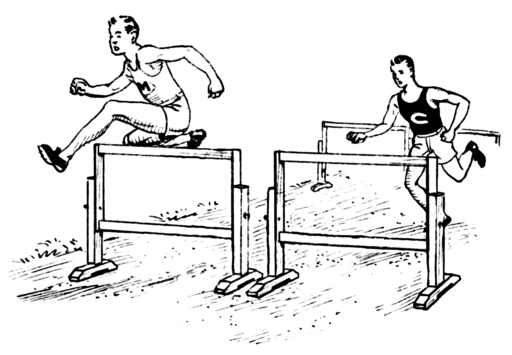What is? SCALE-UP


To a non-faculty member like me, SCALE-UP kind of sounds like a creepy way an amphibious creature would get to the top of a building. Knowing that is probably not the case, I dug deep and found that SCALE-UP is actually a neat way of learning. Back when I was in school (do not ask how long ago that was), I would have loved for my large lectures to have been offered this way. I feel I would have learned more from each class which is also what research has found. But what exactly is SCALE-UP? Read my nutshell description below or consider reading EDUCAUSE’s overview of the SCALE-UP model.
In a nutshell.
SCALE-UP is an acronym for Student-Centered Active Learning Environment for Undergraduate Programs (originally Undergraduate Physics.1 ) Sometimes, the UP is replaced with other things UP might stand for, like Upside-down Pedagogies2 or changed to a different acronym like TEAL which stands for Tech-Enhanced Active Learning. Whatever you call it, the concepts are essentially the same.
One important component of SCALE-UP is the physical design of the space. In a traditional classroom, seats face forward and are usually fixed in that position. Which, I suppose was originally designed to maximize space and deter people, like me, from turning around and whispering, “I like your coat.” or “How was your weekend?”

By Yinan Chen (www.goodfreephotos.com (gallery, image)) [Public Domain], via Wikimedia Commons
In a SCALE-UP room, there’s a pretty specific and well-researched classroom set-up. Classrooms are large enough to accommodate multiple 7-foot round tables, television screens positioned so all seats can see a screen, white boards near each table for collaboration, and an instructor station in the center of the room. Round tables, facing other people – now you’ve gotten college-aged me talking before the class has even begun. And… now that college-aged me knows some people in the class, I might be more likely to participate in group discussions.
Find more detailed information regarding how SCALE-UP rooms are set up and the research behind the room design on either of the following websites:
- North Carolina State University (requires a log-in for detailed information), this is the university where SCALE-UP was founded, so it’s worth a look/log-in and
- University of Lethbridge’s Teaching Centre.
At North Dakota State University we have four SCALE-UP rooms in the A. Glenn Hill building that are available for NDSU faculty to use.

1/12/16 – Biological Sciences faculty Jennifer Momsen teaching in an active learning classroom in the A. Glenn Hill Building.
After reading the initial research, I still thought SCALE-UP rooms were just a fancy way of saying you use, “a room that better accommodates your standard group work.” However, there is another distinctive component of SCALE-UP, namely that the classes are designed differently and incorporate active learning strategies. I’ll write more on active learning strategies that work well in SCALE-UP rooms in another post. Until then, I suggest you view the SCALE-UP Handbook by Nottingham Trent University, which is an excellent comprehensive guide to understanding and working with the SCALE-UP model. My view of these courses changed significantly after I read about the group work-related policies, such as earning bonus points for teams with higher grades on exams, and the ability to “fire” poor performers in a group.3 Let’s face it, what student wouldn’t love a real opportunity to fire that one group member who isn’t pulling their weight? It parallels the real world, where poor performance can cost you your job.
Why bother?
Offering active learning strategies in a large class can be tricky in a traditional classroom setting.
By Pearson Scott Foresman [Public domain], via Wikimedia Commons
Think… a track hurdler jumping over chairs in an auditorium to get into groups and Rocky Balboa in the Rocky series running up and down stairs to clarify points for the whole class. In a SCALE-UP room the instructor (that’s you) can easily walk around to interact with students. The instructor station in the center of the room offers easy access for the instructor to get to their computer or materials from anywhere in the room. No stairs involved. From the instructor station you can override the television screens with what is displayed on your computer or choose to display what is on the screen of any group or individual’s computer. If that is not reason enough, consider that students’
- problem-solving abilities improve,
- conceptual understanding is increased,
- attitudes are better,
- failure rates are reduced, and
- “at risk” students do better in upper-level courses.2
The how-to guide.
Here is your chance to tell us how you use SCALE-UP for your classes. Log-in and post your ideas and thoughts in the comments section below. Let’s learn how to implement SCALE-UP together.
History lesson.
The best history lesson I can provide is information directly from the source. SCALE-UP rooms were designed and tested through research by Dr. Robert Beichner, professor of physics at North Carolina State University (NCSU). Listen to Dr. Beichner discuss SCALE-UP. The NDSU Office of Teaching and Learning recently brought Dr. Maria Oliver-Hoyo to speak with Gateways-ND cohorts about how she adapted the SCALE-UP model for use in chemistry classrooms. Oliver-Hoyo has compiled a list of 100 chemistry education activities for SCALE-UP classrooms (this is where you will want to create a log-in account with North Carolina State University’s SCALE-UP site, as previously mentioned).4
The bottom line.
Lots of research suggests the SCALE-UP model helps students, especially underrepresented populations, do better and learn more in the classroom. I am not a teacher, but what I can tell you is that SCALE-UP is one way to take the stress out of group work for your students. College-age me would not have been stuck covering for those who under performed just to ensure I got a decent grade. Sweet relief! If you are skeptical, but want a way to improve student learning and performance in your large lectures, it might be worth a look at SCALE-UP or apply to the Gateways-ND program to participate in a hands-on learning environment that discusses all aspects of active learning.
Video.
References.
- Retrieved from https://en.wikipedia.org/wiki/SCALE-UP on 4/3/18.
- Retrieved from scaleup.ncsu.edu/FAQs.html on 4/3/18.
- Retrieved from http://www.uleth.ca/teachingcentre/lee/what-is-scale-up#collaboration on 4/3/18.
- Retrieved from https://news.ncsu.edu/2017/04/chemistry-professor-sniffs-out-excellence/ on 4/24/18
Want more info?
- Student-Centered Active Learning Environment with Upside-down Pedagogies website.
- Active Collaborative Learning SCALE-UP Handbook by Nottingham Trent University
- Educause webpage, Chapter 29. North Carolina State University: SCALE-UP.
- University of Lethbridge Teaching Centre website, SCALE-UP.
About the author.

Connie Jadrny, is the marketing and public relations coordinator for NDSU’s Office of Teaching and Learning. In more than 10 years working in marketing at NDSU, Jadrny has learned a lot about higher education. Her latest learning adventure is researching and writing basic blog posts for the What is? series. With, admittedly, no teaching experience, Jadrny hopes you find this series useful and entertaining, especially if you are new to a technique. And, for those who are already experts in a topic, we know you will throw her a bone if when she makes an error. She invites you to share your expertise on each topic by providing examples of successful implementation of each technique. Let’s learn together!